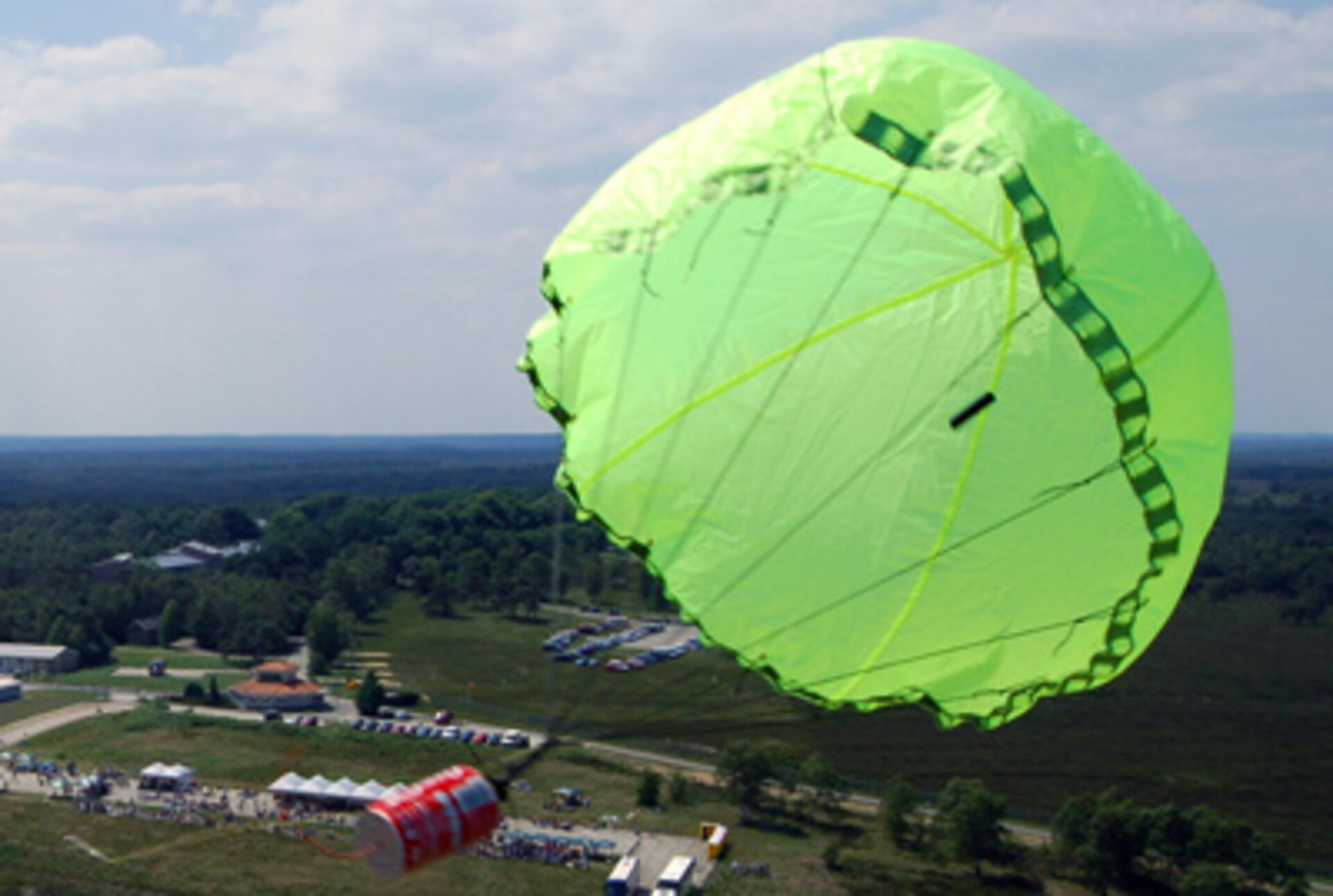New CanSat Competition Announced
Big dreams often start small. If you dream of sending a big mission into space, then the best place to start is with something the size of a drinks can. ESA’s Education Office, in collaboration with the Norwegian Centre for Space-related Education (NAROM), is now inviting high school students to enter the 2014 European CanSat Competition. The deadline for entries is 1 December 2013.
CanSats are small ‘satellites’ that fit all the necessary subsystems found in a real satellite such as power and communications into a 350ml drinks can. They do not go into space but are released from a rocket or a balloon at about 1km altitude. On its way back to the ground, the CanSat has to perform a certain mission and land safely on the ground.
ESA’s 2014 CanSat competition requires that every CanSat completes a primary mission, which is to measure the air temperature and air pressure as it falls back to Earth. This information must be transmitted by the CanSat at least once every second so that the team can analyse the data and display it on a graph.
In addition, the CanSat must be designed to perform a secondary mission chosen by its team. It could be measurements of more advanced parameters, such as acceleration, GPS location or surrounding radiation levels; or it could be to perform a landing using a a control mechanism such as a parafoil to come down as close as possible to a target.

Alternatively, the secondary mission does not need to start until the CanSat touches down. This would be the situation if it were to simulate the exploration of a planetary surface that requires in-situ measurements of an alien landscape.
Entries will be divided into two categories: beginners and advanced, depending upon the experience of the team.
In 2013, the winning CanSat in the advanced category was designed and built by the Air Sat One team, from Portugal. Their CanSat was fitted with a glider mechanism. In the beginners category, first prize went to the KrakSat team from Poland, who measured cosmic gamma and beta radiation simultaneously with the CanSat and equipment on the ground.
This year, up to 16 launch slots are available. Some ESA Member States already run national CanSat competitions. The winners of these are automatically guaranteed a place in ESA's competition. The remaining places are free for everyone to apply.
Each team will comprise between 4 and 10 high school students aged 16 years or more, and will be assisted by a teacher or tutor. The teachers of the chosen teams will attend an introductory workshop at ESA’s ESTEC centre in The Netherlands.
This will take place on 24-25 January 2014. Each teacher will receive a CanSat kit and instruction on topics such as sensors and signal analysis; data handling and data transmission; software installation and programming. There will be time for questions and discussion.
A tour of the world-class satellite facilities at ESTEC will be included.
The Competition Launch Campaign itself will be hosted at the Andøya Rocket Range in Andenes, Norway from 1-5 June 2014.

Notes for Editors:
The call for proposals is published on the ESA Education Portal at www.esa.int/education and on the CanSats in Europe website at www.cansat.eu. The deadline for proposals is Sunday 1 December 2013 at 24:00 CET. A complete proposal form must be submitted to ESA before the deadline, i.e. all team members and the teacher/tutor must be registered on the ESA Education Office's project portal (www.joinspace.org) and a completed copy of the official proposal form must be uploaded.
Eligibility
The following conditions should be fulfilled, in order for a proposal to be considered eligible:
- The team should comprise between 4 and 10 high school students (aged 16+), assisted by a teacher or tutor.
- The team members must be enrolled as full-time students at a school in an ESA Member State.
- The majority of team members must hold the nationality of an ESA Member State.
- A complete application must be submitted to ESA before 24:00 CET on Sunday 1 December 2013.
The full CanSat 2014 Guidelines can be download here.
|
* ESA Member States in 2013 Austria, Belgium, Czech Republic, Denmark, Finland, France, Germany, Greece, Ireland, Italy, Luxembourg, the Netherlands, Norway, Portugal, Poland, Romania, Spain, Sweden, Switzerland, United Kingdom and Canada (Associate Member). European Cooperating States Estonia, Hungary, Slovenia, Latvia Cooperating States Cyprus, Lithuania, Malta, Slovakia |
For more information, please contact:
Helen Page / Sarah Tigrine
ESA Education Office (PPC-PE), ESTEC
Postbus 299, 2200 AG Noordwijk
The Netherlands
Tel: +31 71 565 5518
Email: cansat @ esa.int





